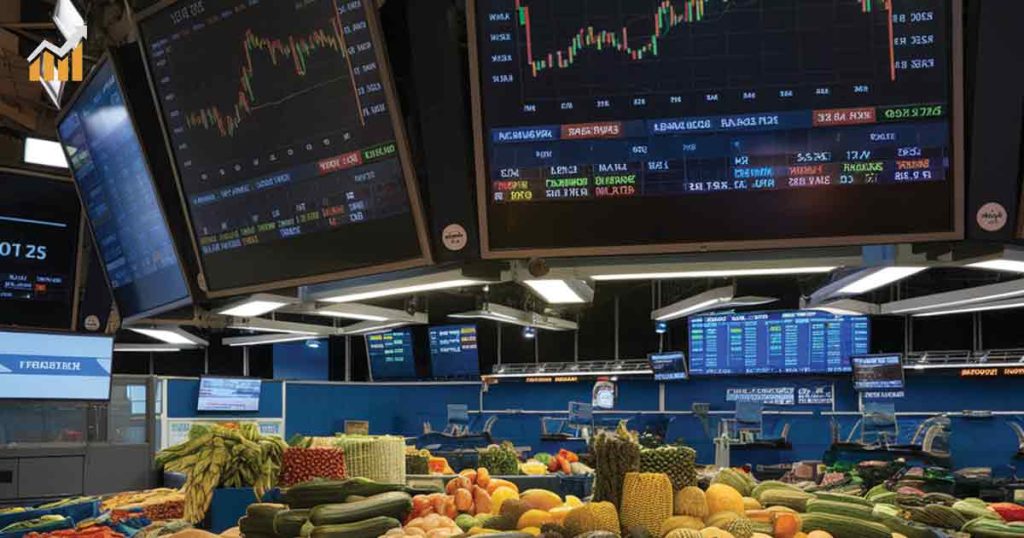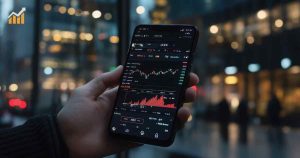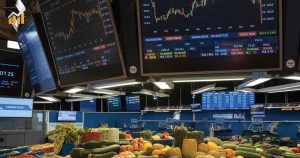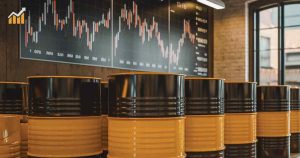Commodity trading is an exciting and potentially profitable frontier of the financial markets. Whether you’re a seasoned investor or a financial enthusiast, the lure of trading commodities like gold, oil, or agricultural products can be strong. But just how profitable is commodity trading, and is it worth the investment? This blog breaks down the essential aspects of commodity trading, from its basics to its profit potential, risks, and how to start.
What is Commodity Trading, and Why is it Relevant Today?
Commodity trading is the buying and selling of physical goods or raw materials like metals (gold, silver), energy sources (oil, gas), and agricultural products (wheat, coffee). Unlike the stock market, which reflects company valuations, commodity trading is tied to tangible assets you can see and touch.
This age-old form of trading has become increasingly relevant in today’s financial markets due to global market instability, fluctuating oil prices, and the rising prominence of gold investments as a safe-haven asset. Platforms like the Pakistan Mercantile Exchange (PMEX) and brokers such as Floret Commodities have made commodities accessible to both large-scale investors and beginners, further increasing their appeal.
Given these factors, commodity trading offers traders an avenue for portfolio diversification while responding directly to real world supply and demand shifts
Understanding the Basics
What Are Commodities?
Commodities are raw materials or primary agricultural products that can be traded in standardized units. They are broadly divided into the following two categories:
- Soft Commodities: Agricultural products like coffee, sugar, and wheat that are grown or farmed.
- Hard Commodities: Natural resources like oil, gold, and metals that are mined or extracted.
How Does Commodity Trading Work?
Commodity trading typically occurs on specialized platforms like PMEX (Pakistan Mercantile Exchange), which allows traders to buy, sell, or trade commodity-based contracts. These include:
- Futures Contracts: Agreements to buy or sell a commodity at a set price on a future date.
- Spot Trading: Immediate purchase or sale of commodities at the prevailing market rate.
Traders profit by speculating on price movements caused by factors like global supply and demand, geopolitical events, and currency fluctuations. For example, oil prices might surge due to tensions in the Middle East, creating opportunities for profit.
The Profit Potential of Commodity Trading
Why is Commodity Trading Seen as Lucrative?
Commodity trading offers opportunities for high returns due to its direct sensitivity to market forces. Whether you’re speculating on rising gold prices during periods of inflation or betting on future oil prices after production cuts, there’s potential for significant upside.
Key profit-driving aspects include:
1. High Volatility:
Commodities like crude oil and gold often experience rapid price swings, creating profit opportunities for traders with sharp instincts.
2. Leverage Options:
Many commodity-trading platforms, like PMEX, offer leverage, meaning traders can control large positions with relatively small amounts of capital.
3. Hedging Opportunities:
Both individual traders and companies use commodities to hedge against unforeseen market risks or inflation. For instance, gold investments are a favored strategy during times of economic uncertainty.
Real-Life Example
Consider this scenario:
- A trader invests in gold when prices are at $1,850 per ounce, anticipating inflationary pressures. A few weeks later, due to economic trends, gold prices rise to $1,920 — a $70 increase per ounce. If this trader bought 10 ounces, they gain $700 in profit minus associated fees.
However, this level of earning potential requires precise knowledge and strategy.
Risks and Challenges in Commodity Trading
Before you plunge into the world of commodities, it’s essential to recognize that high returns come with high risks.
Key Risks of Commodity Trading:
1. Price Volatility:
While volatility is a profit driver, it also increases the risk of losses. For instance, oil prices can drop sharply after unexpected announcements of increased production.
2. Leverage Risk:
While leverage amplifies profits, it can also lead to significant losses beyond your initial investment.
3. Lack of Predictability:
Global factors like natural disasters, geopolitical tensions, or disease outbreaks (e.g., COVID-19) can create sudden and unpredictable commodity price movements.
4. Market Complexity:
Unlike stocks, commodity prices are influenced by global macroeconomic factors, making them harder to predict without extensive analysis.
Case Studies
George Soros’ Bet on Oil Prices
George Soros, one of history’s most successful traders, strategically bet on volatile oil prices during periods of geopolitical unrest. His ability to combine market volatility with calculated risks led to significant profits, underscoring the potential of commodity trading for informed investors.
Floret Commodities’ Expertise
Floret Commodities, a prominent name in PMEX, thrives by using diversified strategies across gold, crude oil, and soft commodities. Their integrated approach demonstrates how professional insight can consistently turn risks into rewards.
How to Get Started in Commodity Trading
Tips for Beginners
1. Thorough Research:
Understand the commodity you want to trade. Is it gold, oil, or agricultural products? Learn about factors influencing their prices.
2. Use a Reputable Platform:
Choose a reliable trading platform like PMEX to access various commodities with transparent fee structures.
3. Start Small:
Begin with a limited capital investment to test your knowledge and strategy.
4. Leverage Expert Insights:
Work with professional advisors or read curated reports from analysts like those at Floret Commodities to make data-driven decisions.
5. Diversify Your Portfolio:
Avoid putting all your funds into one commodity. Spread across different types like gold and agriculture to offset risks.
6. Stay Updated:
Keep track of regular updates on oil prices, gold investments, and global market trends to refine your strategy.
Is Commodity Trading Profitable and Worth the Investment?
The profitability of commodity trading ultimately depends on your knowledge, strategy, and risk tolerance. While the potential for significant returns is undeniable, it’s equally important to acknowledge the challenges and uncertainties involved.
For experienced traders, commodities can be a goldmine—literally and metaphorically. For beginners, it’s an area where adequate preparation and strategic insights make all the difference.
If you’re eager to explore the wealth of opportunities in commodities, platforms like PMEX and Floret Commodities offer the tools and resources you need to get started.
Take the Next Step for profitable commodity trading
Commodity trading holds immense profit potential, but success lies in informed decisions. Are you ready to begin your trading journey? Start exploring PMEX or consult experts at Floret Commodities to gain an edge in the market today.
FAQs
How profitable is commodity trading in 2025?
Commodity trading in 2025 has significant profit potential, driven by market volatility, leverage options, and hedging opportunities. However, profitability depends on your knowledge, strategy, and ability to manage risks effectively



